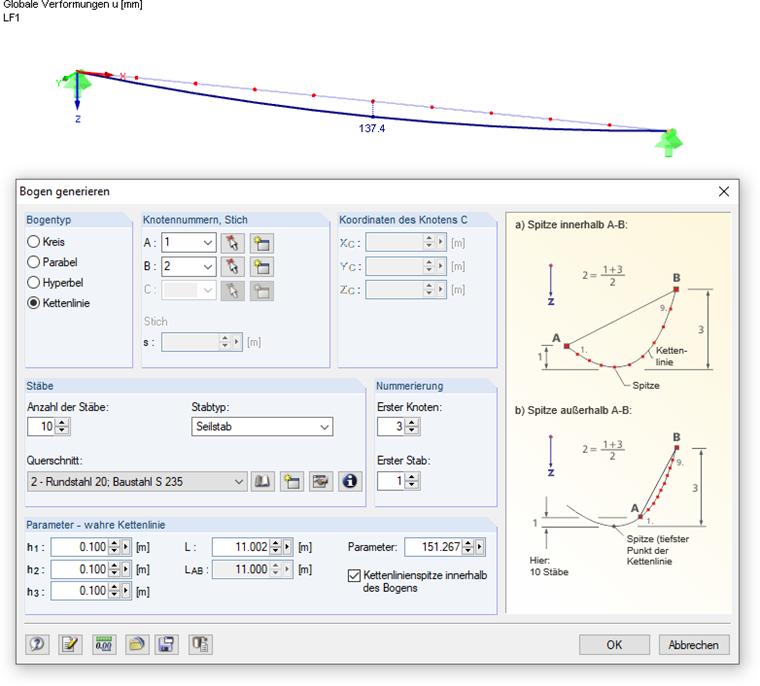Yes, it is. Cables only absorb tension forces. This allows cable chains to be calculated, taking longitudinal and transverse forces into account. To do this, it is necessary to define the complete cable as a cable chain consisting of several cable members. It is possible to create the chain lines quickly, using the menu "Tools → Generate Model → Arc". The more precisely the initial shape of the chain line matches the real cable chain, the more stable and faster the calculation can be.
We recommend prestressing the cable members. This way, compressive forces that would lead to failure will be prevented. Cables should also be used only if the deformations make a significant contribution to the changes in the internal forces; that is, if large deformations may arise. For simple, straight riggings like transverse bracings, tension members are completely sufficient.
When evaluating deformations of cable members, set the scaling factor in the control panel to "1" so that the tightening effects are represented close to reality.
The large deformation analysis ("third-order theory") takes longitudinal and transversal forces into account during the analysis of internal forces. In the analysis, the stiffness matrix is created for the deformed system after each iteration step.
Member loads that have been defined as local are currently handled in such a way that the load direction is the same as for the undeformed system. All internal forces are transformed to the deformed member axis systems. Members of the "Cable" member type are always calculated according to the large deformation analysis. The remaining members will be treated according to the selected method of analysis.

